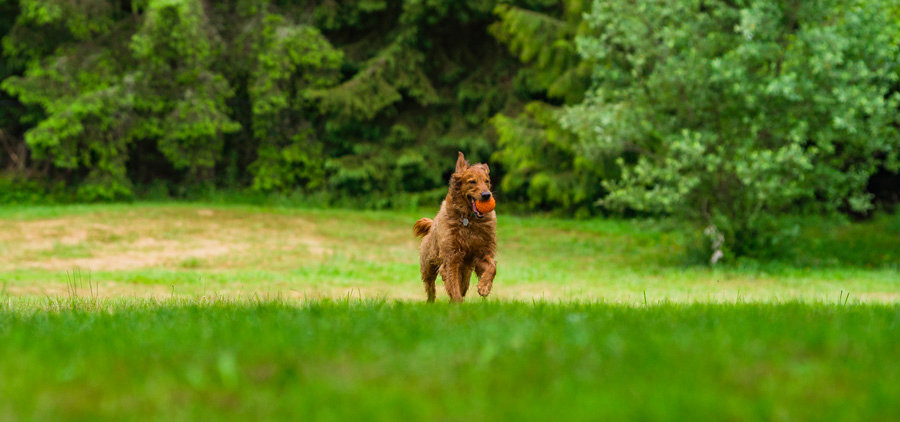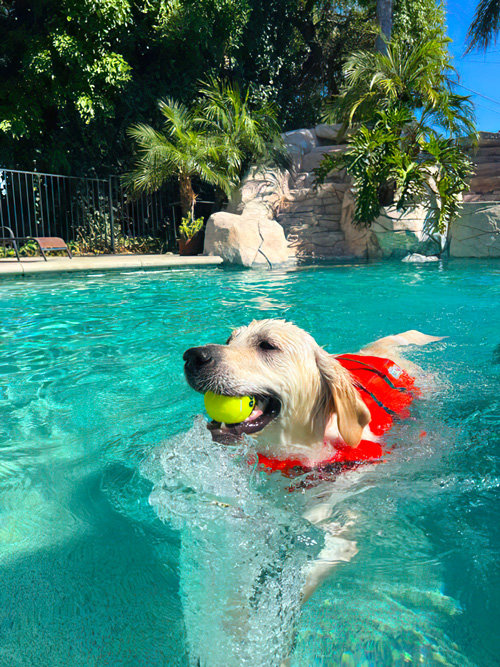Understanding and Managing Your Dog's Anxiety

* All Sniffspot articles are reviewed by certified trainers for quality, please see bottom of article for details *
Does your dog pace, pant, or destroy things when alone? These could be signs of anxiety in dogs. It's a common problem, but thankfully, there are ways to help. This guide explores the different types of canine anxiety, including separation anxiety and noise phobias. We'll cover how to recognize the subtle signs of stress in dogs, plus practical training tips and ways to create a supportive environment. Let's help your dog live a calmer, happier life.
Small amounts of anxiety can be a normal part of everyday life without lasting negative effects. A high level of anxiety, though, can become long-term problems or even indicate a different underlying cognition (like chronic pain). If your dog is feeling anxious all or most of the time, that’s going to disrupt their quality of life — and yours as their caretaker.
Anxiety might be the result of past experiences, your pup’s innate temperament (we all have unique individual personalities), age, or a few other factors.
This article outlines everything you need to know about anxiety in dogs. What are the symptoms of anxiety? What are its causes? How can you manage life with an anxious pup?
What is canine anxiety?
Dog owners (and even some dog trainers) often use the word “anxious” interchangeably with “fearful.” When it comes to the technical definitions of the terms, though, anxiety is actually not quite fear.
Let’s take a look at the distinctions.
Key Takeaways
- Recognize the signs and address the underlying causes of anxiety: Anxiety in dogs often manifests as excessive panting, barking, destructive behaviors, and changes in body language. Addressing the root causes, such as lack of socialization or past trauma, is key to effective management.
- A combination of management and training offers the best long-term solution: While short-term calming aids can provide temporary relief, focus on long-term strategies like exercise, mental enrichment, and positive reinforcement training to build your dog's confidence and resilience.
- Professional guidance is essential for personalized support: Consult a certified professional dog trainer for guidance on behavior modification techniques tailored to your dog's specific needs. Your veterinarian can also help rule out medical conditions and offer additional support.
What is fear?
Fear is an instinctive emotion animals experience when faced with an external threat (whether real or just perceived). It can be caused by specific situations, people, other pets, objects, and so on.
When our dogs experience fear, their bodies prepare for “fight or flight” by freezing and subconsciously taking inventory of the situation.
Fear is a completely normal response that’s actually essential for survival. In an evolutionary context, the ability to feel fear can greatly increase an animal’s chance of survival — hence the common phrase “healthy fear” we use when talking about things that are actually dangerous.
Some fears are abnormal, though. It’s possible to perceive a threat that isn’t actually there or to have a reaction far more intense than what the stimulus actually warrants.
(Thankfully, most abnormal fear responses can be helped with gradual, supported exposure and things like counterconditioning — more on this in our articles about fear aggression and dog reactivity.)
What is a phobia?
A phobia is a fear that is both excessive and persistent. Once a dog experiences a phobic event, they might find themselves entering a full-blown panicked response if they associate anything in the environment with its memory. Phobias often get worse over repeated exposures to the scary stimuli.
Noise phobias are the most commonly seen in pet dogs.
What is anxiety?
While fear is an emotion elicited by the present situation — things happening in real time — anxiety is defined as the anticipation of an imagined or unknown future danger. This results in a similar physiological response to fear, but on a more chronic basis (and without the survival benefits they evolved to achieve).
Separation anxiety is the most common specific anxiety in pet canines. Dogs with separation anxiety can’t relax when they aren’t around their key attachment figure. You can read more in our separation anxiety article!
Types of Anxiety in Dogs
Dogs experience several different types of anxiety. Some anxieties are very specific, like a fear of thunderstorms, while others are more general, like feeling nervous when left alone. Let's explore some of the most common anxieties affecting our canine companions.
Separation Anxiety
Separation anxiety is the most common specific anxiety in dogs. Dogs with separation anxiety can’t relax when they aren’t around their key attachment figure. Often, this anxiety manifests as destructive behaviors around the house (like chewing furniture or excessive barking) when their person is gone. You can learn more about separation anxiety in our dedicated article.
Noise Anxiety
Noise anxieties—fear of loud noises—are very common in dogs. While any loud noise can be upsetting to some dogs, two noise-related anxieties are especially prevalent.
Thunderstorm Anxiety
Thunderstorm anxiety is a specific type of noise anxiety where dogs exhibit fear and stress during thunderstorms. This can be triggered by the loud booms of thunder, the flashes of lightning, or even changes in barometric pressure. The American Kennel Club offers helpful information on treating dog anxiety, including thunderstorm anxiety.
Fireworks Anxiety
Fireworks anxiety is another common form of noise anxiety, where dogs may react with fear and panic during fireworks displays. The loud bangs and bright flashes can be extremely distressing for many dogs. For tips on handling firework anxiety, check out the AKC's advice on treating dog anxiety.
Age-Related Anxiety (Cognitive Dysfunction Syndrome)
Age-related anxiety is often linked to cognitive dysfunction syndrome (CDS), similar to Alzheimer's disease in humans. CDS primarily affects older dogs and can cause changes in behavior, including increased anxiety, confusion, and disorientation. The AKC provides further details on CDS and its effects.
Anxiety Related to New or Traumatic Experiences
Anxiety can also stem from new experiences or traumatic events, such as moving to a new home, a stay at the veterinary clinic, or past abuse. Changes in routine or environment can be particularly challenging for some dogs. The Cummings School of Veterinary Medicine offers insights into anxiety related to new or traumatic experiences.
Signs your dog is anxious
Because we can’t actually know what’s going on inside our dogs’ heads, we have to rely on their body language cues to try to understand what they’re feeling. For this reason, many signs of fear and anxiety overlap in our pets.
These signs of anxiety might indicate that your dog is having a hard time:
- Excessive panting
- Excessive barking or whining
- Destructive behavior in the house (especially in adult dogs who aren’t teething)
- Pacing
- Shaking
- Drooling
- Vomiting
- Urinating or defecating indoors
- Compulsive or repetitive behaviors
- Growling, lunging, or snapping (many fearful or anxious displays are often mistaken as aggressive behavior)
Again: It’s normal for your dog to be fearful on occasion and to display these behaviors in certain situations. Remember they don’t have verbal language like we do!
If you notice that these signs occur excessively, though — or if you can’t clearly tell what’s causing them — it’s worth considering if your dog might be struggling with some chronic anxiety.
Symptoms of Generalized Anxiety
Generalized anxiety is a more pervasive form of anxiety, meaning it isn’t tied to any one specific trigger. Dogs with generalized anxiety tend to be anxious much of the time, regardless of the situation. Common signs include excessive panting, barking or whining, destructive behavior (like chewing furniture or shredding things when they're alone), pacing, shaking, drooling, vomiting, and inappropriate urination or defecation. They might also display compulsive or repetitive behaviors. In some cases, growling, lunging, or snapping can be anxiety-related, especially if the dog is feeling overwhelmed or cornered.
Symptoms of Separation Anxiety
Separation anxiety is the most common specific anxiety in dogs. It's triggered by being separated from their guardians or key attachment figures. Dogs with separation anxiety struggle to relax when they're left alone. They might exhibit similar symptoms to generalized anxiety, such as destructive behavior, excessive vocalization, and house soiling. You can learn more about how to address this in our article on separation anxiety.
Symptoms of Noise Anxiety
Noise anxiety, also known as noise phobia, is often triggered by loud noises like thunderstorms or fireworks. Affected dogs might show extreme fear responses during these events, including panting, pacing, hiding, trembling, and destructive behavior. Some dogs might even try to escape their homes out of fear. For more information on how to help your dog with noise anxiety, check out our article on noise anxiety.
Symptoms of Age-Related Anxiety
As dogs age, they can experience anxiety related to cognitive decline, similar to dementia in humans. This is often linked to cognitive dysfunction syndrome (CDS). Symptoms can include restlessness, pacing, disorientation, changes in sleep patterns, increased vocalization, and house soiling. If you notice these changes in your senior dog, consult your veterinarian to discuss potential treatments and management strategies.
Body Language Indicators of Anxiety
Recognizing anxiety in dogs often involves understanding their body language. While some signs are obvious, others are more subtle. Here are a few key body language indicators to watch for:
Whale Eye
“Whale eye” refers to when you can see the whites of your dog’s eyes (the sclera) because they’re widening their eyes and looking away from something stressful. It’s a subtle but important sign that your dog is feeling uncomfortable or anxious. They might also show a tense facial expression and hold their body rigidly. For a deeper understanding of canine body language, you can explore resources like this guide from the American Kennel Club.
Hesitant Posture
A hesitant posture is another indicator of anxiety. Your dog might appear unsure or reluctant to move forward, often with a lowered body and tucked tail. They might freeze in place or move very slowly, showing a lack of confidence in their surroundings. Creating a safe and comfortable environment can help ease anxiety. Sniffspot offers private dog parks that can provide a secure space for anxious dogs to explore and play without the stress of unfamiliar dogs or crowded public parks.
Other Body Language Cues
Other signs of anxiety can include yawning, excessive licking (especially of their lips or nose), and avoiding eye contact. Your dog might also tuck their tail between their legs, flatten their ears against their head, or display a general sense of unease. Remember, it's important to consider the context of these behaviors. For example, a dog yawning after waking up is normal, but excessive yawning in a stressful situation could indicate anxiety. If you're unsure, consulting a certified dog trainer or veterinarian can be helpful. You can find top dog trainers recommended by Sniffspot.
Understanding the Context of Symptoms
It’s important to remember that these symptoms don’t always mean your dog has an anxiety disorder. For example, panting can be a normal response to exercise or heat. Similarly, barking can be a way for dogs to communicate or express excitement. The key is to consider the context of these symptoms. If they occur excessively, without a clear trigger, or in situations that wouldn’t normally warrant such a response, it may indicate underlying anxiety. If you're concerned about your dog's behavior, it's always best to consult with a veterinarian or a certified professional dog trainer. They can help you determine the underlying cause of the symptoms and develop a plan to address any potential anxiety issues.
What causes anxiety in dogs?
No one knows exactly what causes anxiety in dogs. Every dog is an individual — and every situation is different, too. That said, a range of things are associated with potential anxiety problems in our canine companions, from genetic conditions, problems with puppy socialization (or lack of), and age-related health conditions such as doggy dementia.
Some of the most common causes of fear and anxiety in dogs include:
- Feeling forced into unfamiliar experiences or a stressful situation (this is one reason it’s so important to take socialization slowly, at a pace your puppy is comfortable with, and to allow environmental desensitization to happen gradually)
- Not experiencing sufficient environmental exposure during the critical socialization window (until around 14 to 16 weeks of age)
- Physical pain, especially if chronic
- Illness and disease that affect your dog’s central nervous system, like viral infections or other toxic responses
- The natural aging process that can cause confusion as your dog gets older
Is your dog’s anxiety your fault as their owner?
Many pet owners find themselves asking if they caused their dog to be anxious. Some old-school trainers perpetuate this myth, only making things worse for dog lovers who are already overwhelmed.
We’re here to tell you that your dog’s anxiety is not your fault. While it’s certainly possible that some environmental and social factors have played into their development (and that those have been influenced in some ways by you as their caretaker) there are countless variables at play. Nothing with your dog happens in a vacuum!
Say it with us: You love your dog. You do your best for them. You are not their key source of anxiety. Many dogs develop anxiety through absolutely no fault of their owners. Do not shoulder the blame for something so largely out of your control.
Medical Causes of Anxiety
Sometimes, anxiety is secondary to an underlying medical condition. If your dog suddenly develops anxiety or their anxiety seems to get much worse very quickly, it’s important to schedule a check-up with your veterinarian. Many illnesses and injuries can cause behavioral changes, including increased anxiety.
Some medical reasons for anxiety in dogs include:
- Physical pain, especially if chronic
- Illness and disease that affect your dog’s central nervous system, like viral infections or other toxic responses
- Cognitive decline or age-related confusion
Your vet can help determine if your dog’s anxiety is rooted in a medical issue. They can also advise you on the best course of treatment, which may include medication or other therapies.
Environmental Causes of Anxiety
Our dogs’ environments play a huge role in their emotional wellbeing. Think about it: so many parts of our pets’ lives aren’t compatible with their natural instincts and drives. Things like living in crowded cities or not performing the jobs they were originally bred for can take a toll.
Some environmental factors that can contribute to a dog’s anxiety include:
- A lack of early socialization: Puppies have a critical socialization period (up until around 14 to 16 weeks of age). Not experiencing enough positive exposure to different sights, sounds, people, places, and other animals during this key developmental stage can lead to anxiety later in life. You can learn more about puppy socialization.
- Sudden changes in routine or environment: Moving to a new home, changes in family dynamics (like a new baby or a loss), or even switching to a different dog food can be unsettling for some dogs.
- Exposure to traumatic events: A negative experience, such as being attacked by another dog or involved in a car accident, can cause long-lasting anxiety.
- Feeling forced into unfamiliar or stressful situations: It’s important to take socialization slowly, at a pace your puppy is comfortable with. Allow them to gradually desensitize to new environments. Forcing a fearful dog to interact can worsen their anxiety.
Creating a safe, predictable, and enriching environment can significantly help an anxious dog. Booking a private Sniffspot can give your dog a safe space to decompress and enjoy themselves without the pressure of interacting with unfamiliar dogs.
Social Causes of Anxiety
Just like us, dogs are social creatures. Their relationships with other dogs and humans can significantly impact their emotional state. Some social factors that can contribute to anxiety include:
- Lack of early socialization with other dogs: If puppies don’t have positive interactions with other dogs during their critical socialization period, they may develop anxiety around other canines later in life.
- Negative experiences with other dogs: Being attacked or bullied by another dog can create lasting anxiety.
- Changes in social dynamics within the household: The introduction of a new pet or the loss of a companion animal can disrupt the social balance and trigger anxiety in some dogs.
- Inconsistent or unpredictable interactions with humans: Dogs thrive on routine and clear communication. Inconsistent training methods, unpredictable responses from owners, or a lack of clear boundaries can cause anxiety.
If your dog’s anxiety stems from social situations, working with a qualified certified professional dog trainer or a certified applied animal behaviorist can be incredibly helpful. They can help you develop strategies to address your dog’s specific anxieties and improve their social skills.
How to manage dog anxiety in the short term
Thundershirts or other “anxiety wraps”
Thundershirts and similar anxiety wraps apply a constant, mild pressure to the dog’s torso, in a soothing way. (Think of this like swaddling a baby — it’s a similar idea.)
Some dogs take very well to these wraps and find them effective, while others don’t. It’s difficult to know ahead of time whether they will work for your dog — but you can always try making a DIY version to see how your pup responds.
Anti anxiety dog beds
There are a few types of dog beds that may help with anxiety.
Bolsters
Bolsters are raised edges that run along the side of a bed (ideal for curling against or leaning on).
Burrow beds
Burrow beds or “cave-style” beds are kind of like a sleeping bag. They’re ideal for dogs who feel safest under blankets.
Do anti anxiety dog beds actually work?
It’s tough to say. One of these beds may be comforting to an anxious dog, especially if they feel particularly worried overnight and sleep in a different room than you do. However, there is no definitive data on their effectiveness.
There is little risk associated with them (they’re not going to make your dog’s anxiety worse, so feel free to give them a try), but keep in mind that many high end pet products can get expensive.
You might consider allocating your resources to professional training instead.
Dog calming sprays
Pet calming sprays use calming pheromones to help soothe stressed out dogs or cats. You simply need to spray (or use a diffuser) in the room that your dog is in. Like most products marketed for our pets’ fears and anxieties, the jury is still out on whether or not they actually work.
Most of the published research has been done on Feliway (cat pheromones) and D.A.P. (Dog Appeasing Pheromone). In several studies, both of these products seemed to help soothe stressed pets under some circumstances. (However, most of these studies were funded by the products’ maker — so take them with a grain of salt.)
Calming treats for dogs
A variety of “calming treats” are widely available these days. These treats may contain anything from chamomile to melatonin to CBD or a combination.
CBD calming treats
CBD treats are becoming increasingly popular, and some dog parents report that they find them effective, but keep in mind that at this time, there are no FDA-approved CBD products for pets.)
Other calming treats
There is some data that Anxitane, Zylkene, Soliquin, and similar veterinary over-the-counter calming non-CBD products can help alleviate anxiety in our pets. Many of these options include L-Theanine, milk products such as casein, and herbal ingredients.
Always talk with your veterinarian before giving your dog any new medication, even if it’s sold over the counter. Remember that even if calming treats work well for your dog — and they might! — you will still likely need to use them in combination with behavior modification training.
High anxiety dog crates
Some anxious dogs, particularly those with separation anxiety, may benefit from certain types of dog crates. Dog trainers generally recommend choosing a crate that is not too big (some anxious dogs like a smaller crate for coziness), cave-like (rather than cage-like), 100% secure, and that contains nothing that can be chewed.
Keep in mind that simply putting your anxious dog into a crate will not automatically calm them down — and in some cases, being confined can make things worse. You should always take care to properly condition your dog to any tool you use and work with a professional trainer to ensure a positive experience if in doubt. This will make sure their kennel is a safe space, not a stressful situation.
Learn about crate training:
- How to crate train an older dog
- How to crate train a puppy
Creating a Safe Space
For many anxious dogs, having a safe space can make a world of difference. This designated area should be a comfortable and predictable haven where your dog can retreat when feeling overwhelmed. Think of it as their own little sanctuary, a place where they can de-stress and feel secure. As the American Kennel Club notes, a comfortable and secure environment can significantly ease a dog's anxiety.
This safe space could be a quiet corner in your home, a cozy dog bed, or even a properly introduced crate. If using a crate, make sure your dog has positive associations with it. It shouldn’t be used as punishment. The Cornell University College of Veterinary Medicine points out that crates can be particularly helpful for dogs fearful of other dogs or people, offering them a secure retreat. For more on crate training, check out our articles on crate training an older dog and how to crate train a puppy.
Fill the safe space with familiar items like your dog's favorite toys, blankets, and even clothing that carries your scent. These familiar objects offer comfort and reassurance. Adding calming sounds, such as soft music or white noise, can also create a more soothing atmosphere, especially when you're away, as suggested by the Alliance of Therapy Dogs. You can even find calming music designed for dogs on platforms like Spotify or YouTube. Consider adding a Sniffspot visit to your dog's routine to provide a safe and enriching outdoor experience.
In addition to a physical safe space, establishing a consistent routine can also significantly reduce anxiety. Predictability helps dogs feel more in control and less anxious about what to expect. Cornell University College of Veterinary Medicine emphasizes the importance of routines for feeding, walks, playtime, and rest in managing anxiety. A regular schedule helps regulate your dog's internal clock and provides a sense of stability.
How to reduce dog anxiety in the long term
Exercise
Depending on your dog’s age, breed, and health, make sure you’re providing them with adequate physical outlets. Exercise reduces stress in the short-term — just like in humans! — and can help keep your dog feel calmer overall. As a bonus, proper exercise can also help reduce destructive behaviors like digging and chewing.
Related links:
- Comprehensive guide to dog exercise
- Dog exercise calculator
Mental stimulation
Similarly, mental stimulation is great for all dogs — and especially for dogs with anxiety. There are lots of ways to provide your dog with mental stimulation, including games, learning new tricks, and special toys. Try to set aside some time every day specifically for cognitive enrichment!
Learn more:
- Comprehensive guide to enrichment activities
- Best mental exercises for dogs
Puzzle Toys and Enrichment Activities
Puzzle toys and other enrichment activities are fantastic for providing mental stimulation, which can tire out a dog just as much as physical exercise. This type of mental workout is especially beneficial for dogs dealing with anxiety. Enrichment activities encourage your dog to use their problem-solving skills, reducing boredom and easing anxiety. They also offer a great way to redirect anxious energy into something positive.
There are many different puzzle toys available, from simple treat-dispensing balls to more complex multi-step puzzles. Start with easier puzzles and gradually increase the difficulty as your dog learns. You can even create DIY puzzle toys using household items like cardboard boxes, muffin tins, and old towels. Our post on mental exercises for dogs has some great ideas.
Beyond puzzle toys, consider other forms of enrichment:
- Scent work: Hide treats or toys around your house or yard and let your dog use their nose to find them.
- Training games: Teach your dog new tricks or practice familiar ones. Even short training sessions provide mental stimulation.
- Chew toys: Offer a variety of safe and durable chew toys to keep your dog occupied and help relieve stress.
- Social interaction: If your dog enjoys other dogs, schedule playdates or visits to a Sniffspot.
Even a little daily enrichment can significantly improve your dog's well-being, especially if they are prone to anxiety. Just like us, dogs need mental stimulation to thrive.
Training
Ultimately: On top of meeting your dog’s basic needs (which can certainly help many pups who show symptoms of anxiety) you want to get to the root cause of your dog’s discomfort.
The best course of action is to bring in a qualified trainer who can help you understand what your dog is experiencing and develop a personally tailored treatment plan to help them feel better.
Counter-Conditioning
Counter-conditioning is a training technique used to change your dog’s emotional response to a specific stimulus. As the American Kennel Club explains, this involves pairing the feared or anxiety-inducing situation with something positive, such as high-value treats or a favorite game. This helps your dog learn to associate the once-scary thing with a positive experience. Over time, the negative association fades, replaced by a new, happier connection.
For example, if your dog is scared of the mail carrier, you might start by giving them a really yummy treat every time they see the mail truck from a distance. As they get more comfortable, you can gradually decrease the distance, always pairing the sight of the mail carrier with something positive. Eventually, your dog might even start looking forward to the mail arriving!
Desensitization
Desensitization goes hand-in-hand with counter-conditioning. It involves gradually exposing your dog to the anxiety trigger in a controlled manner. The key is to start at a level that doesn’t provoke a fear response, as detailed by the AKC. It’s all about finding that “sweet spot” where your dog is aware of the trigger but not overwhelmed by it. This is often referred to as staying “under threshold.”
Think of it like introducing a shy dog to new people. You wouldn’t throw them into a crowded party right away. Instead, you might start with one calm, friendly person at a safe distance, offering tasty treats and praise. As your dog gets more comfortable, you can gradually introduce more people and decrease the distance, always making sure your dog stays under threshold. This allows them to slowly adjust and build confidence at their own pace.
Both counter-conditioning and desensitization are powerful tools for managing anxiety in dogs, but they require patience, consistency, and a deep understanding of your dog's individual needs. Working with a certified professional dog trainer can be incredibly helpful in developing a desensitization and counter-conditioning plan that’s right for your pup and their specific anxieties. Check out our list of the top dog trainers in the United States to find a qualified professional near you.
Medication
Medication can also be a helpful part of your dog’s anxiety treatment plan. Make sure to always talk with your professional trainer and veterinarian for guidance when deciding if and what type of drug is right for your dog’s medical condition — and use any prescription in combination with thoughtful behavior modification training.
For more detailed information, take a look at our article on medication for anxious dogs!
SSRIs and Antidepressants
For severe anxiety, your vet might prescribe medications like SSRIs (selective serotonin reuptake inhibitors) or other antidepressants. These medications work by increasing serotonin levels in the brain, which can help regulate mood and reduce anxiety. Commonly prescribed SSRIs for dogs include fluoxetine (Prozac) and clomipramine (Clomicalm). Trazodone (Desyrel) is another antidepressant sometimes used to manage anxiety in dogs, particularly situational anxiety. It's important to note that these medications can take several weeks to become fully effective and may have potential side effects, so close monitoring by your vet is essential. Never attempt to medicate your dog with human medications, as this can be extremely dangerous and even fatal.
Benzodiazepines
Benzodiazepines, such as alprazolam (Xanax) and diazepam (Valium), are fast-acting anti-anxiety medications that can be helpful for short-term or situational anxiety in dogs, like a fear of thunderstorms or fireworks. These medications work quickly to reduce anxiety symptoms, but they are generally not recommended for long-term use due to the potential for dependence and other side effects. Dexmedetomidine (Sileo) is another medication in this class sometimes used for noise phobias. As always, your vet will determine the appropriate medication and dosage for your dog's specific needs.
Selegiline
Selegiline (Anipryl) is a medication primarily used to treat Canine Cognitive Dysfunction (CCD), also known as dog dementia, in senior dogs. CCD can often manifest as increased anxiety and confusion, and selegiline can help improve cognitive function and reduce anxiety symptoms in these cases. If you suspect your senior dog is experiencing age-related anxiety, consult your vet to discuss whether selegiline or other treatments might be appropriate. You can find more information about CCD on the American Kennel Club website.
Natural Therapies
In addition to medication, several natural therapies may help manage your dog's anxiety. It's crucial to discuss these options with your vet before trying them, especially if your dog is already taking other medications. The American Kennel Club offers a good overview of natural therapies for dog anxiety.
Pheromones
Synthetic pheromones, like those found in dog calming sprays and diffusers, mimic the natural pheromones mother dogs release to calm their puppies. These products can create a sense of comfort and security for some dogs, potentially reducing anxiety. While research on their effectiveness is ongoing, many dog owners report positive results.
Aromatherapy
Certain essential oils, such as lavender and chamomile, are believed to have calming properties for dogs. However, it's essential to use only pet-safe essential oils and in appropriate dilutions, as some oils can be toxic to dogs. Always consult with a holistic veterinarian or a certified aromatherapist experienced with animals before using aromatherapy with your dog. For more information on using essential oils safely with your pets, check out resources like the ASPCA's guide on essential oils.
CBD Oil for Anxiety (with Cautions)
CBD oil has gained popularity as a potential treatment for anxiety in dogs. Some dog owners report positive effects, but it's important to proceed with caution. Currently, the FDA does not regulate CBD products for pets, so quality and consistency can vary significantly. Additionally, research on the effectiveness and long-term safety of CBD for dogs is still limited. If you're considering using CBD oil for your dog's anxiety, consult your vet to discuss the potential risks and benefits and to ensure you're choosing a high-quality product from a reputable source.
Preventing Anxiety in Dogs
While there’s no foolproof way to completely prevent anxiety in dogs (just like in humans!), there are plenty of things you can do to give your pup the best chance. Proactive steps are always a smart move — they’re much easier than reactive ones!
Early Socialization
Early socialization is crucial for puppies. Between the ages of 3 and 14 weeks old, carefully introduce your puppy to as many new sights, sounds, smells, places, people, and other animals as possible. Continue this process in the following months, too. The goal isn’t to force your puppy into frightening situations, but rather to help them learn that the world is generally safe and predictable. A well-socialized puppy is much less likely to develop anxiety later in life. The American Kennel Club offers excellent resources on socialization.
Obedience Training
Obedience training involves much more than teaching your dog basic commands. It's about building a strong, trusting relationship rooted in clear communication. Obedience training also facilitates socialization. When your dog understands your expectations, they'll feel more confident and secure in new environments. Check out our list of the top dog trainers to find a qualified professional in your area.
Proper Exercise and Nutrition
A healthy dog is often a happy dog! Proper exercise and nutrition are vital for both physical and mental well-being. A tired, well-nourished dog is less susceptible to anxiety. Ensure your dog gets enough physical activity and eats a balanced diet. You can find more information on dog exercise in our comprehensive guide.
Learning Dog Body Language
Dogs communicate primarily through body language. Learning to interpret your dog's cues can help you avoid negative experiences that might contribute to anxiety. Recognize signs of stress, fear, and discomfort in your dog. This awareness allows you to adjust your interactions and prevent overwhelming them. For more information on understanding your dog, check out our dog names resource center.
Establishing a Consistent Routine
Dogs thrive on routine. A consistent routine—in feeding, exercise, playtime, and rest—reduces anxiety by creating predictability and security. Stick to a regular schedule as much as possible, especially for your dog's essential needs.
Respecting Your Dog's Need for Rest and Alone Time
Like humans, dogs require adequate rest and downtime. Ensure your dog's needs for rest and alone time are met. Designate a quiet, comfortable space where your dog can relax undisturbed. Avoid overwhelming your dog with constant interaction or activity.
Finding Dog-Friendly Spaces with Sniffspot
Sometimes, reducing anxiety involves getting out and exploring! Sniffspot connects dog owners with private, dog-friendly locations where dogs can run and play freely without the stress of crowded dog parks. Creating a comfortable area at home with familiar items (toys, blankets) and calming sounds can also help your dog feel more at ease. Whether it's a dog water park for a summer swim or a quiet trail for a relaxing walk, Sniffspot can help you find the ideal spot for your dog.
You’re not alone if you live with an anxious dog — and there is hope!
Having an anxious dog can be overwhelming. With the right tools, patience, and support network, though? You can help your pup feel more comfortable and live a full life by their side!
While working with your dog, don’t hesitate to get in touch with a professional force free trainer for guidance or connect with fellow pet parents who have challenging companions of their own. We love our pets more than anything in the world — and we also need to take care of ourselves, too.
When to Consult a Veterinarian
It’s always a good idea to consult your veterinarian if you think your dog might be experiencing anxiety. Sometimes what looks like “anxiety” is actually a symptom of an underlying medical condition. For example, pain can manifest as changes in behavior, including behaviors we might perceive as anxiety. Ruling out any potential medical causes is an important first step.
As the experts at Tufts University explain, “If your dog is feeling anxious all or most of the time, that’s going to disrupt their quality of life—and yours as their caretaker.” Getting support is key.
Your vet can also be a great resource for additional support and guidance. They might prescribe medication to help your dog, or they might refer you to a veterinary behaviorist for more specialized help. A veterinary behaviorist is a veterinarian who has done additional training specifically in animal behavior.
Comforting Your Anxious Dog
It’s a common misconception that comforting a dog experiencing anxiety will somehow reinforce or worsen the anxiety. This simply isn’t true. As Tufts University points out, comforting an anxious dog is okay and doesn't worsen the anxiety. If your dog is feeling anxious, providing comfort and reassurance can actually be helpful.
There are lots of ways to comfort your dog. A gentle touch, soft words, or simply being present can make a big difference. Some dogs also respond well to things like anxiety wraps, which apply gentle, constant pressure. Finding a safe, enriching space for your dog to de-stress can also be helpful.
Creating a safe space for your dog can also be comforting. This might be a quiet corner, their crate (if they’ve been crate trained and enjoy it), or a specific dog bed. Having a predictable, safe haven can give your dog a sense of security when they're feeling overwhelmed.
Training Methods to Avoid
While training can be incredibly helpful for anxious dogs, it’s crucial to choose the right methods. Force or domination-based training is not only ineffective but can actually be harmful and worsen your dog’s anxiety. These methods rely on intimidation and punishment, which can create fear and distrust, ultimately damaging your relationship with your dog.
Similarly, harsh punishment should always be avoided. Punishment doesn’t address the underlying cause of the anxiety and can make your dog even more fearful and reactive.
Instead of punishment-based approaches, look for a certified professional dog trainer who uses positive reinforcement methods. Positive reinforcement focuses on rewarding desired behaviors, building a positive association with training, and creating a strong bond between you and your dog. This approach is much more effective for addressing anxiety and fostering a happy, healthy relationship with your furry friend.
Trainer Review of this Article
There is so much misinformation out there, we want to make sure we only provide the highest quality information to our community. We have all of our articles reviewed by qualified, positive-only trainers.
This is the trainer that reviewed this article:
Rayanne Spence CPDT-KA, IAABC-ADT
Professional Dog Trainer – Animal Medical Center of Hattiesburg
Related Articles
- Dog Anxiety Causes and Treatment | Sniffspot
- Dog Separation Anxiety | Training and Cures | Sniffspot
- When and How To Think About Medication For Anxious Dogs
- Dog Barrier Reactivity and Frustration Training | Sniffspot
- Phobias in Dogs | Causes, Symptoms, and Treatment
Frequently Asked Questions
Is it my fault that my dog is anxious? Absolutely not. While environmental and social factors can play a role, canine anxiety is complex and not solely the owner's responsibility. Many factors contribute, including genetics, early experiences, and even medical conditions. Focus on supporting your dog and seeking professional guidance rather than blaming yourself.
How can I tell if my dog's symptoms are due to anxiety or something else? Consider the context. Panting after a run is normal; panting while resting in a quiet room might signal anxiety. Similarly, barking at a delivery person differs from incessant barking for no apparent reason. If behaviors seem excessive, out of context, or accompanied by other signs like pacing or trembling, consult your vet to rule out medical causes and discuss potential anxiety.
My dog is scared of thunderstorms. What can I do? Noise anxieties, like those triggered by thunderstorms or fireworks, are common. Creating a safe space with familiar items and calming sounds can help. Counter-conditioning, where you pair the scary noise with something positive like treats, can gradually change your dog's emotional response. A certified trainer can guide you through this process. For severe cases, medication might be an option to discuss with your vet.
What's the difference between fear and anxiety in dogs? Fear is a natural response to a present danger, like a strange dog approaching. Anxiety, however, is the anticipation of a future or imagined threat. A dog might display similar behaviors (like trembling or hiding) in both situations, but anxiety is often more chronic and not tied to an immediate, obvious trigger.
What kind of training methods should I avoid if my dog has anxiety? Avoid punishment-based or dominance-based training. These methods can worsen anxiety by creating fear and distrust. Instead, seek a certified professional dog trainer who uses positive reinforcement techniques. Rewarding desired behaviors builds confidence and strengthens your bond with your dog, creating a more positive learning experience.
Most recent articles
Related articles
Top dog guides per area
Dog training guides

Dog Food Aggression: Why You Shouldn't Punish It
Does your dog ever growl when you walk by their food dish? Maybe they get possessive of treats, carrying them far away and giving you side-eye when you start to approach — or snarling at your other pets or children if they get too close.

Best Dog Fields in the US: 25+ Wide-Open Spaces for Your Pup to Run Free
The best dog fields in the US offer something that traditional enclosed parks simply can't match: acres of open space where your pup can truly stretch their legs and run at full speed. From Colorado's 470-acre prairie meadows to Tennessee's award-winning "Outback," these wide-open spaces allow dogs to roam, explore, and exercise naturally while engaging instincts that cramped urban parks suppress.

The Ultimate Guide to Scent Training for Dogs
Your dog's nose is an amazing tool. Did you know they have 40 times the olfactory receptors than humans? Scent training for dogs taps into this superpower, turning everyday moments into exciting sniff-fests. It's enriching for all types of dogs – reactive, shy, or simply adventurous. Ready to explore the world of scent work for dogs? Let's get started.

Service Dog Training Costs: DIY vs. Pro
More than 80 million Americans rely on their service dogs to help them navigate the world. Task-trained assistance animals perform a huge range of life-changing—in many cases, life-saving—services: These dogs act as eyes for visually impaired handlers, provide mobility support, alert to seizures and blood sugar crashes, interrupt anxiety attacks, remind their people to take medications, and so much more.

How to Deal With Puppy Potty Training Regression
You thought those dreaded middle-of-the-night potty breaks were over. You were finally free from cleaning up puppy puddles. Then, suddenly, your furry friend starts having accidents again. It's frustrating, right? This puppy potty training regression is more common than you think. Don't worry; we'll help you get your pup back on track. We'll cover the common causes, offer practical solutions, and give you actionable steps to tackle this challenge together.

Dirty Dog Syndrome: Causes, Solutions, and Prevention
It's a cringe-worthy moment every dog owner dreads: your furry friend chowing down on something truly disgusting. If your dog has a penchant for poop, you're dealing with coprophagia. It's more common than you think, and thankfully, often manageable. This article explores the reasons behind dirty dog syndrome, from instinct to learned behavior. We'll also give you practical tips to help break this unpleasant habit.

How to Train Your Rescue Dog: A Complete Guide
* All Sniffspot articles are reviewed by certified trainers for quality, please see bottom of article for details *
Dog enrichment guides

Best Dog Water Parks in the US: 15+ Amazing Splash Destinations for Your Pup
Do you have a water-loving dog looking to burn some energy? There are countless dog parks to visit throughout our country — but some of them become far too hot in the midday sun to be safe for your pets to play. That’s why we’ve put together a list of some of the best dog water parks throughout the United States! At these locations, your pup can frolic, splash, and swim to their heart’s content.

Best Dog Fields in the US: 25+ Wide-Open Spaces for Your Pup to Run Free
The best dog fields in the US offer something that traditional enclosed parks simply can't match: acres of open space where your pup can truly stretch their legs and run at full speed. From Colorado's 470-acre prairie meadows to Tennessee's award-winning "Outback," these wide-open spaces allow dogs to roam, explore, and exercise naturally while engaging instincts that cramped urban parks suppress.

Best Toys for Herding Dogs: Keeping Your Pup Happy & Engaged
Herding dogs are amazing, intelligent companions. But that also means they need more than just a simple game of fetch. Finding the right toys for herding dogs is key to keeping them happy and stimulated. This article explores some of the best toys for herding dogs, including options specifically for breeds like Border Collies and Australian Shepherds. We'll help you discover the perfect herding toys for dogs to tap into their natural instincts and keep them entertained for hours.

Tough Dog Toys for Aggressive Chewers: A Practical Guide
Does your dog destroy every toy you give them? Is your house littered with the remnants of plush toys? Are you tired of wasting money on "indestructible" dog toys for aggressive chewers that don't last? Then this post is for you. We'll cover everything you need to know about finding the best dog toys for aggressive chewers, so you can finally give your pup something safe, durable, and fun.

Daily Exercise Calculator: How Much Exercise Does Your Dog Need?
Everyone knows dogs need exercise, but how much is enough? Walks are great, but creating a truly balanced fitness plan means understanding your dog's specific needs. This post helps you develop a daily exercise calculator for your dog, considering breed, age, and lifestyle. We'll cover fun activities, understanding exercise intensity, and recognizing when your pup has had enough. Let's create a plan that keeps your dog happy and healthy!

Complete Guide To Herding With Dogs
* All Sniffspot articles are reviewed by certified trainers for quality, please see bottom of article for details *

Dog Enrichment Activities: The Ultimate Guide
Ever feel like your dog is restless or bored? They may be getting enough exercise, but still need more. That's where enrichment activities for dogs come in. Giving your dog opportunities to sniff, explore, and problem-solve can make a world of difference. Whether you have a puppy, adult, or senior dog, enriching their environment is key for their well-being. Let's explore how to add cognitive enrichment for dogs, even tailoring activities to your dog's breed with breed specific enrichment and fun enrichment games for dogs.
Dog reactivity guides

Rottweiler Aggression: Truth vs. Myth
Many dogs have gotten a bad reputation over the years for being "dangerous breeds." Rottweilers are among them. Like pit bulls and other large, blocky-headed types of dogs, these powerful and beautiful animals are often assumed to be aggressive.

Best Dog Fields in the US: 25+ Wide-Open Spaces for Your Pup to Run Free
The best dog fields in the US offer something that traditional enclosed parks simply can't match: acres of open space where your pup can truly stretch their legs and run at full speed. From Colorado's 470-acre prairie meadows to Tennessee's award-winning "Outback," these wide-open spaces allow dogs to roam, explore, and exercise naturally while engaging instincts that cramped urban parks suppress.

What Is a Reactive Dog? A Practical Guide for Owners
Does your dog suddenly transform into a barking, lunging Tasmanian devil on walks? It's stressful for both of you. If this sounds familiar, you might have a reactive dog. Understanding what is a reactive dog is the first step to calmer walks. We'll explore the common triggers and give you actionable strategies to manage and modify this behavior. Let's turn those stressful walks into enjoyable outings.

How to Socialize a Reactive Dog: A Step-by-Step Guide
Does your dog display reactivity to other pets or people? Maybe they’re a new rescue pup and are still settling into your home. Or they were sick growing up, so you missed their critical socialization period. Possibly they’ve had a bad experience after being raised as a normal puppy.

What Is a Reactive Dog? A Complete Guide
Is your dog overly excited or fearful around other dogs? Do they bark, lunge, or whine? You might have a reactive dog. Many dog owners face this challenge. Understanding what a reactive dog is is the first step to helping them. This guide explores the common causes of dog reactivity, explains what makes a dog reactive, and offers practical tips and resources. Let's work together to build a stronger bond with your dog and enjoy stress-free walks.

9 Best Online Communities for Reactive Dog Parents
Does your dog's reactivity make walks stressful? You're not alone. Many dog owners face similar challenges. This guide offers practical advice and support for managing reactivity, including finding the best online dog training for reactive dogs. We'll connect you with reactive dog support groups, share training tips, and explore resources like the best dog training app for reactive dogs. Let's build a stronger bond with your dog, together.
* All Sniffspot articles are reviewed by certified trainers for quality, please see bottom of article for details *
How To Groom a Reactive Dog
* All Sniffspot articles are reviewed by certified trainers for quality, please see bottom of article for details *
Sniffspot community guides

The State of Public Dog Parks Across the United States
From 2009 to 2020, there was a 40 percent increase in the development of public dog parks. Designated spots for canine exercise have become commonplace in every major city in North America — many pet owners won’t even consider renting an apartment that doesn’t have its own fenced-in pet area for their canine companions.

Best Dog Fields in the US: 25+ Wide-Open Spaces for Your Pup to Run Free
The best dog fields in the US offer something that traditional enclosed parks simply can't match: acres of open space where your pup can truly stretch their legs and run at full speed. From Colorado's 470-acre prairie meadows to Tennessee's award-winning "Outback," these wide-open spaces allow dogs to roam, explore, and exercise naturally while engaging instincts that cramped urban parks suppress.

How This Family is Affording Their Dream Property Through Renting it Hourly to Dogs
Thousand Oaks, California has been a safe haven for Sniffspot host, Jen, since childhood. Having grown up in busy Santa Barbara, Jen, an introvert from an early age, would seek out solitude and serenity away from tourists attractions and droves of people visiting from elsewhere. “My grandparents own 60 acres about a 30 minute drive from here, and I grew up spending every summer and every holiday visiting them on the ranch,” Jen explained. “In Santa Barbara, we wouldn't go to the beach on the weekend because that's where everybody was, so you'd find places off the beaten path where the tourists weren't. For me, the ranch was just my happy place.”

Host Tips: Ellen K. What Makes Sniffspot Successful for Me
Ellen is the host of Country Pasture Getaway, one of Sniffspot's most popular sniff spots. She has taken the time to write up the lessons she has learned about how to be a great sniff spot host.

How this Oregon Farmer is Making a Business From Renting Her Land to Dogs
Just 20 minutes outside of the busy city of Portland, Oregon, and settled right on the banks of the Columbia River, you’ll find what countless visitors have flocked to the area in search of – mountain views, crisp, clean air, and running water for miles. What you might not expect to find, however, is a hidden oasis designed just for dogs and their people, owned and operated by a farming couple and enjoyed by visitors on two legs, and four.

Host Tips: Fran T. Providing Great Guest Service at our Spot
Fran is the host of Ranch Setting, one of Sniffspot's most popular spots. She has taken the time to write up the lessons she has learned about how to be a great Sniffspot host.

How Sniffspot Helped a Nervous Rescue Work Through His Fears and Change His Family’s Life
This is the story of a family and dog rescuing each other.
Top dog trainers in the US
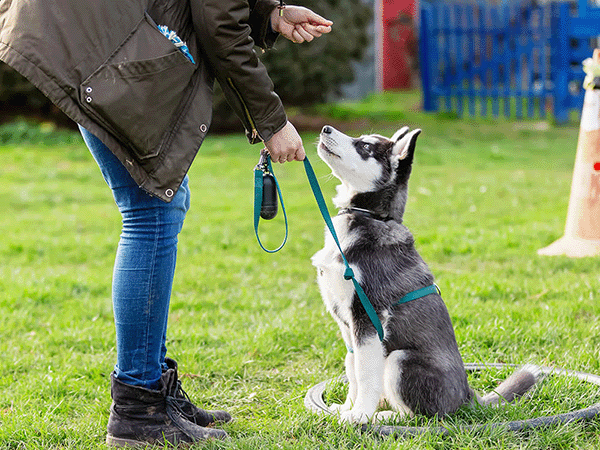
The Best Dog Trainers in the United States of 2025
This is a list of the top dog trainers in the United States, based on votes from the Sniffspot community and the general public.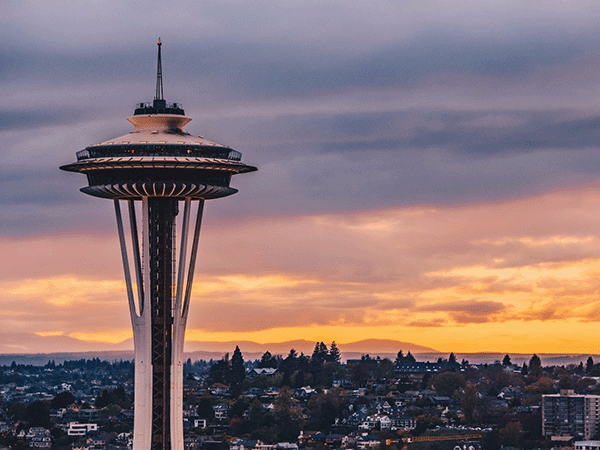
The Best Dog Trainers in Seattle, WA of 2025
This is a list of the top dog trainers in Seattle, WA, based on votes from the Sniffspot community and the general public.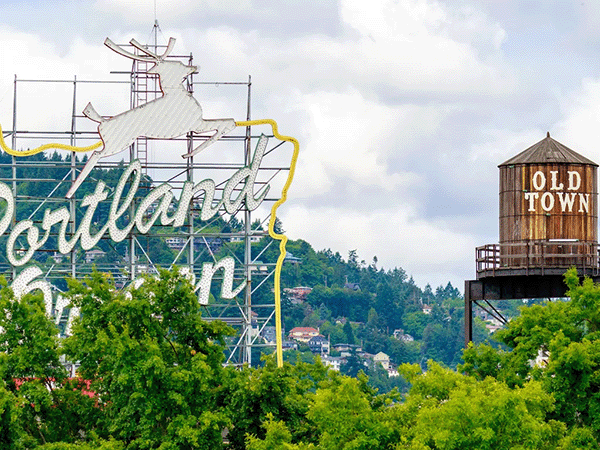
The Best Dog Trainers in Portland, OR of 2025
This is a list of the top dog trainers in Portland, OR, based on votes from the Sniffspot community and the general public.
The Best Dog Trainers in Los Angeles, CA of 2025
This is a list of the top dog trainers in Los Angeles, CA, based on votes from the Sniffspot community and the general public.
The Best Dog Trainers in New York, NY of 2025
This is a list of the top dog trainers in New York, NY, based on votes from the Sniffspot community and the general public.
City dog parks guides

Top 10 Indoor Dog Parks: A US Guide
Looking for a space to play with your dog no matter what the weather’s like outside? Look no further than our list of the best indoor dog parks in the United States! These climate-controlled spaces are growing in popularity as pet ownership increases throughout the country. As a bonus, many of them also offer dog training, boarding, grooming, or daycare services on the premises.

Best Dog Fields in the US: 25+ Wide-Open Spaces for Your Pup to Run Free
The best dog fields in the US offer something that traditional enclosed parks simply can't match: acres of open space where your pup can truly stretch their legs and run at full speed. From Colorado's 470-acre prairie meadows to Tennessee's award-winning "Outback," these wide-open spaces allow dogs to roam, explore, and exercise naturally while engaging instincts that cramped urban parks suppress.

Best Dog Parks in the US: Ultimate Guide to Public & Private Off-Leash Adventures
Is your pup giving you those pleading "let me run free" eyes? Whether you're a new dog parent or a seasoned pro looking for fresh adventures, finding the perfect off-leash paradise for your furry friend can feel ruff! From sun-soaked California beaches where your water-loving lab can make a splash to mountain trails in Vermont where your adventure buddy can chase every scent, we've sniffed out the 15 best dog parks across America.

Dog Parks Near Me: Las Vegas Edition
Looking for the perfect dog park near me in Las Vegas? You're in luck! This guide explores all the best options for your pup, from public dog parks to private dog parks near me on Sniffspot. We'll help you find the ideal spot for playtime, socializing, and fresh air. Plus, we'll cover essential etiquette and safety tips to ensure a happy visit for everyone. Get ready for some tail-wagging fun!

Top Sniffspot Locations: Find the Perfect Dog Park
Looking for the perfect dog park? Whether you need a wide-open public space or a private, fenced-in spot, this guide will help you find the best dog parks across the US. We'll cover top-rated public parks, the perks of private dog parks, and even explore Sniffspot locations – giving your pup a safe and fun place to play. Ready to find your dog's new favorite spot? Let's go!

Sniffspot: Portland's Best Private Dog Parks
Ready to discover Portland's best dog parks? Whether you're looking for a public park or the unique experience of a private Sniffspot, this guide has you covered. We'll help you find the perfect spot for your pup, with tips on what to bring, how to prepare, and even understanding dog body language. Plus, we'll explore some top Portland dog parks, including public and Sniffspot options, so you can plan your next dog-friendly adventure in the City of Roses.
Portland Dog Parks: Public & Private Options
This page is about public city dog parks and also includes Sniffspot private dog parks. Sniffspot is the largest network of private dog parks for rent in the world!
Small Dog Park Guide: Tips for Finding the Perfect Spot
Finding the perfect dog park for your small breed can be ruff! Big dog parks can be overwhelming, even dangerous, for little pups. This comprehensive guide helps you sniff out the best small dog parks for your pint-sized companion, covering everything from essential safety checklists to top recommendations for small dog parks across the US—including both public spots and private dog parks.
Dogs breeds

German Shepherd Dogs: Insights From Real Dog Owners
The German Shepherd Dog (GSDs) are known for their intelligence, loyalty, and striking appearance. They're also incredibly versatile, excelling as working dogs and devoted family companions. This guide covers everything you need to know about GSDs, from understanding their unique traits and rich history to practical advice on training and care. So, whether you're a seasoned GSD owner or just starting your research, let's explore this remarkable breed together.

Best Dog Fields in the US: 25+ Wide-Open Spaces for Your Pup to Run Free
The best dog fields in the US offer something that traditional enclosed parks simply can't match: acres of open space where your pup can truly stretch their legs and run at full speed. From Colorado's 470-acre prairie meadows to Tennessee's award-winning "Outback," these wide-open spaces allow dogs to roam, explore, and exercise naturally while engaging instincts that cramped urban parks suppress.

Labrador Retriever: Ultimate Guide by Owners
Discover the Labrador Retriever, a breed celebrated for its playful nature, affectionate temperament, and trainability. Labradors are known for their friendly demeanor and adaptability, making them perfect family companions and versatile working dogs. As one of the most popular types of retrievers, Labs are ideal companions for various lifestyles and are recognized by the American Kennel Club (AKC) as an excellent breed for families.

Golden Retriever Advice: The Complete Owner's Guide
Golden Retrievers: they're gorgeous, playful, and incredibly popular. But before you welcome one into your home, you need the right golden retriever advice. This guide draws on the wisdom of nearly 10,000 Golden Retriever owners, offering practical tips for caring for these affectionate dogs. From understanding their high energy levels to mastering grooming and training, we'll cover everything you need to know. So whether you're already a devoted Golden parent or just starting your research, get ready to learn how to give your furry friend the best possible care.

American Staffordshire Terrier: Your Complete Guide
Think American Staffordshire Terriers are tough? Think again. While their muscular build might intimidate some, these dogs are known for their playful and loyal personalities. This guide draws on the experience of nearly 10,000 AmStaff owners to reveal the truth about this often misunderstood breed. Want to learn more about caring for an American Staffordshire Terrier? You're in the right place.

Australian Shepherd Facts: Breed Info & Care Guide
Discover the Australian Shepherd, an AKC breed celebrated for its trainable, playful, and affectionate nature. Despite its name, the Australian Shepherd is actually a native breed to the United States, originally developed to breed on farms and ranches. Considered a medium dog, Australian Shepherds were bred for herding beginning in the 1950s. As one of the high-energy breeds, Aussies are known for their boundless energy and need for regular exercise, including aerobic exercise.

Essential Husky Facts for Owners: Breed Guide
Discover the Siberian Husky, a breed celebrated for its curious, intelligent, and loyal nature. Considered a medium-sized dog, Siberian Huskies were originally bred in Russia for sledding, beginning in the early 20th Century. Today, they're one of the most popular active breeds in North America.










